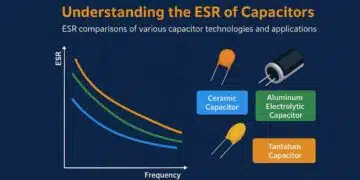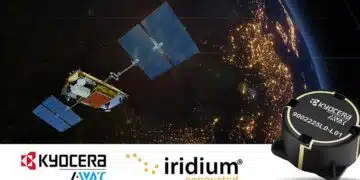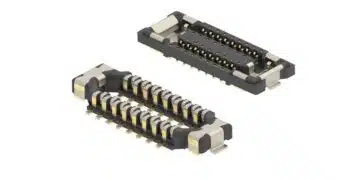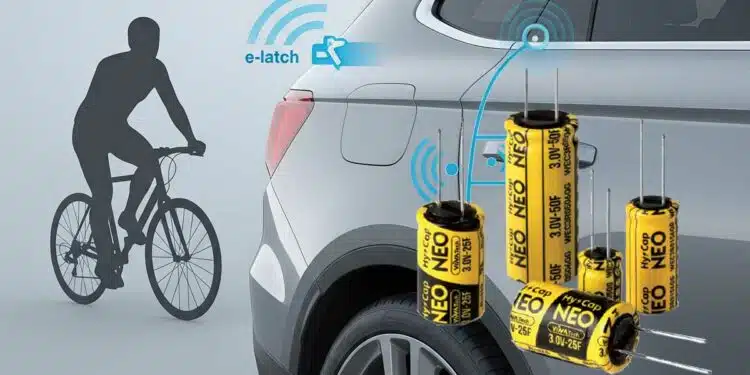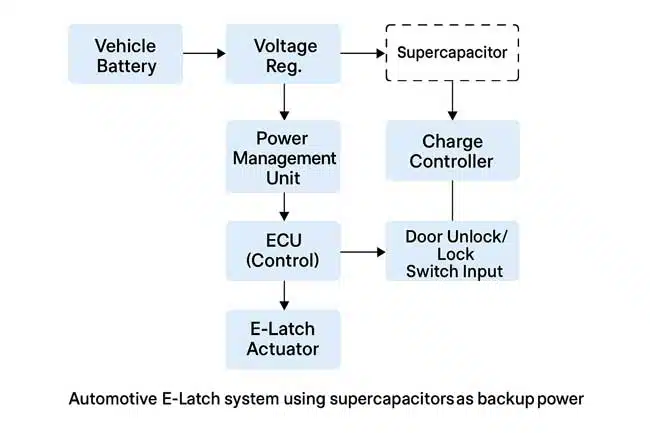VINATech, a global leader in advanced energy storage solutions, announced the growing adoption of VINATech supercapacitors in critical automotive E-Latch systems across Europe.
These high-performance supercapacitors provide a vital emergency backup power source, significantly enhancing passenger safety in the event of an accident or main battery failure.
As vehicle electrification continues to advance, including autonomous driving systems and sophisticated in-cabin technologies, the demand for robust and reliable emergency power solutions has become paramount.
Automotive E-Latch system
The automotive E-Latch system is an advanced electronic door latch technology designed to replace traditional mechanical door handles with a more convenient, safer, and seamless way to open and close vehicle doors.
Key Features and How It Works
- Instead of pulling a mechanical handle, the E-Latch uses electronic sensors and discreet buttons inside the door handle area. A light press or touch on the button activates the latch, allowing the door to open smoothly and quietly.
- The system is often linked to the vehicle’s key fob or phone as a key, enabling doors to unlock and open at the press of a button when the authorized device is nearby.
- Inside the vehicle, a small button or sensor allows occupants to open the door with a gentle press, simplifying exiting the vehicle.
Safety Enhancements
- Many E-Latch systems integrate blind-spot monitoring and Safe Exit Assist. This technology detects approaching cyclists, vehicles, or pedestrians and prevents the door from opening if it’s unsafe, alerting occupants with visual and audible warnings.
- This feature helps reduce the risk of accidents caused by opening doors into oncoming traffic or cyclists.
Supercapacitors as a Safe Safety Solution
While modern automotive systems offer unprecedented convenience, a secondary, fail-safe mechanism is essential. VINATech’s supercapacitors are recognized as a superior backup power and energy source, boasting significantly longer lifespan and higher reliability compared to conventional energy storage alternatives.
A testament to their performance and dependability, leading OEMs and Tier 1 suppliers are increasingly integrating VINATech’s 3V 25F and 50F supercapacitors into E-Latch applications. In an emergency, these supercapacitors ensure that vehicle doors can be opened, allowing occupants to escape safely even if the primary electrical system is compromised.
VINATech’s commitment to world-class quality is affirmed by recent successful audits. Our manufacturing facilities in Vietnam recently underwent a rigorous assessment by a top-tier European automotive supplier, who expressed considerable impression with VINATech’s state-of-the-art production lines and stringent quality control systems. This recognition underscores VINATech’s capability to meet the demanding standards of the global automotive industry.
We anticipate hosting more visits and audits from global companies in the coming months, further solidifying VINATech’s position as a trusted partner for critical automotive componentry.
About VINATech:
VINATech is a global leader in advanced energy storage solutions, specializing in the development and manufacturing of high-performance Supercapacitors and the VinaEnesol line of Aluminum Polymer and Aluminum Polymer Hybrid capacitors. Committed to innovation and quality, VINATech provides cutting-edge energy storage solutions for a wide range of applications across the globe, enhancing efficiency, reliability, and safety in various industries.





